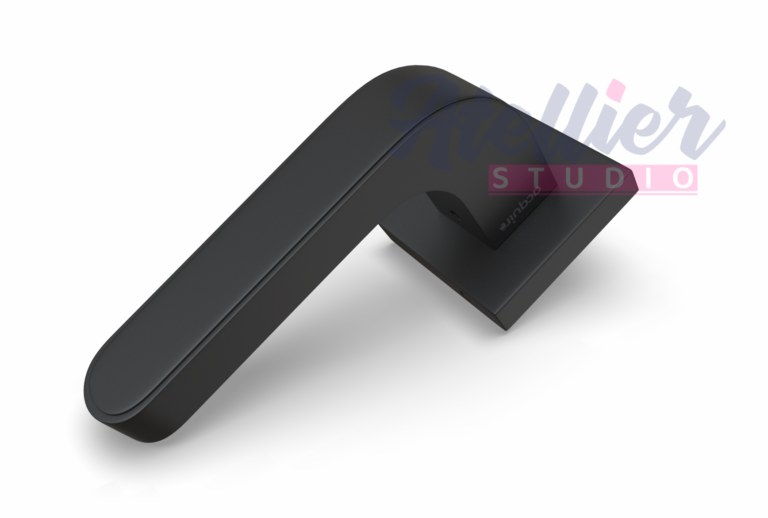
3D Product Rendering Services is the culmination of the 3D Product visualization process, where in photorealistic 2D images are generated from 3D models. It involves creating detailed models of objects, applying textures to them, and strategically setting up lighting within the scene. This process brings the 3D models to life and produces lifelike representations of the virtual environment.
In the realm of 3D rendering, specialized software processes all the data linked to the 3D model, converting it into a 2D image. Remarkably, with advancements in texturing and lighting techniques, this resultant 2D image can be incredibly realistic, akin to a genuine photograph, or artistically stylized, depending on the artist’s intent and the visualization objective.
Here's a breakdown of the process involved in 3D product rendering:
While the terms “3D product rendering” and “3D Product visualization” are occasionally used interchangeably, it’s essential to distinguish that 3D Product rendering constitutes the ultimate phase of the 3D visualization process. To provide a comprehensive understanding, let’s delve into the detailed breakdown of the 3D visualization process, leading up to the pivotal stage of 3D rendering.
Creating 3D models or objects Using visualization software:
The first step is to create a digital 3D model of the product. There are many approaches to creating a 3D Product model or object. Once you understand the goal of product visualization, you are in a better position to select the correct approach, check the article What Is Maxwell Render? High Quality 3D Rendering.
While creating a 3D Model for visualization purposes, models have to be created with minute detailing. As Product models for manufacturing purposes are created in CAD software, similarly, for Rendering and visualization purposes, models can be created in various visualization software, such as Maya, Max, Sculpture, etc. 3D Model meshes, polygons, and edgesails are extremely important, and an experienced 3D artist understands them very well.
Texturing: Adding Material and Textures:
Polygons serve as the fundamental building blocks defining the shape of 3D objects. However, in their raw state, they lack color and surface intricacies. To address this, artists can associate textures with each polygon in a 3D object. These textures can vary from simple monochrome colors to remarkably realistic simulations of diverse surfaces, such as natural elements like rock or wood, or industrial materials like metal or plastic.
A single 3D object may consist of thousands, or even millions, of polygons. Regardless of whether it portrays the sleek modernity of a kitchen blender or the coarse texture of an elephant’s skin, it remains composed of polygons with relatively blank surfaces. Nevertheless, the magic of 3D materials allows artists to create an illusion of depth. These textures transcend the mere addition of reflectivity or color, enabling the incorporation of intricate details like stitching on fabric or rows of rivets along the edge of an industrial metal surface. Manually incorporating such details into an object’s geometry would be a time-consuming endeavor, but with the aid of these sophisticated 3D materials, such complexity becomes achievable.
Once the 3D model is ready, texture artists add surface details, colors, and materials to the model to make it look more realistic. This involves applying textures and materials that simulate various surfaces, such as metal, plastic, wood, glass, or fabric.
Adding Light and Shadows:
As we need good light to see product clearly in our daily life same ways in 3D good light can create a realistic 3D product rendering. Lighting is a crucial aspect of 3D rendering, as it determines how the product appears in the final image or animation. Lighting artists set up virtual light sources to cast realistic shadows, highlights, and reflections, enhancing the overall realism of the scene.
The key to transforming a cluster of polygonal objects into a lifelike environment lies in realistic light sources. However, 3D artists typically do not manually paint light or shadows. Instead, they set up a 3D scene with parameters for the direction, intensity, and type of light source that illuminates the objects, giving them a genuine appearance.
Rendering:
After the model is fully textured and lit, the 3D scene is rendered. Rendering is the process of converting the 3D data into a 2D image or animation. This can be a computationally intensive process, especially for complex scenes, as it requires simulating how light interacts with the surfaces in the scene.
Rendering software possesses the capability to produce a single image or execute rapid successive renderings, creating the illusion of real-time motion.
Post-Processing:
Once the rendering is complete, the final image may undergo post-processing. This step involves using image editing software to enhance the image further, adjusting colors, contrast, and adding any additional visual effects if necessary.Post-processing can also involve removing any imperfections or blemishes from the image, such as dust particles or unwanted objects. Additionally, this stage allows for fine-tuning the overall composition and ensuring that the image meets the desired aesthetic goals.
Get a Call Back.
Benefits of 3D Product Rendering:
Realism: 3D product rendering allows for incredibly realistic representations of products, which can be difficult or expensive to achieve with traditional photography. This level of realism helps potential customers visualize the product accurately and make informed purchasing decisions. Moreover, 3D product rendering provides the flexibility to showcase products in various environments, allowing businesses to create compelling visual marketing materials that stand out from competitors.
Flexibility: Changes to the product’s design can be easily made in the 3D model without the need for costly reshoots or physical prototypes. This saves businesses time and money, as they can quickly iterate and make adjustments to the product before it goes into production. Additionally, 3D product rendering allows for customization options, where customers can see different variations of the product in real-time, helping them choose the perfect option that suits their needs.
Overall, 3D product rendering is an invaluable tool for showcasing products in a visually compelling and realistic way, making it an essential part of marketing and product development strategies for many businesses. In addition to its benefits in product development, 3D rendering also offers cost savings by eliminating the expenses associated with physical prototypes. Moreover, it allows for easy customization and adjustments to the product design without the need for extensive rework or additional resources.
Related Posts:
Get a Call Back.
Vikkrant Shinde is a seasoned professional with expertise in 3D animation. A graduate in B.Sc Animation and postgraduate in Operational Management, he seamlessly blends creative flair with technical prowess. With a rich background in 3D product animation and rendering, Vikkrant brings ideas to life through the magic of animation. His journey is marked by a commitment to excellence, transforming concepts into captivating visual experiences. As a visionary in the field, Vikkrant continues to push the boundaries of creativity, leaving an indelible mark in the dynamic world of animation.
